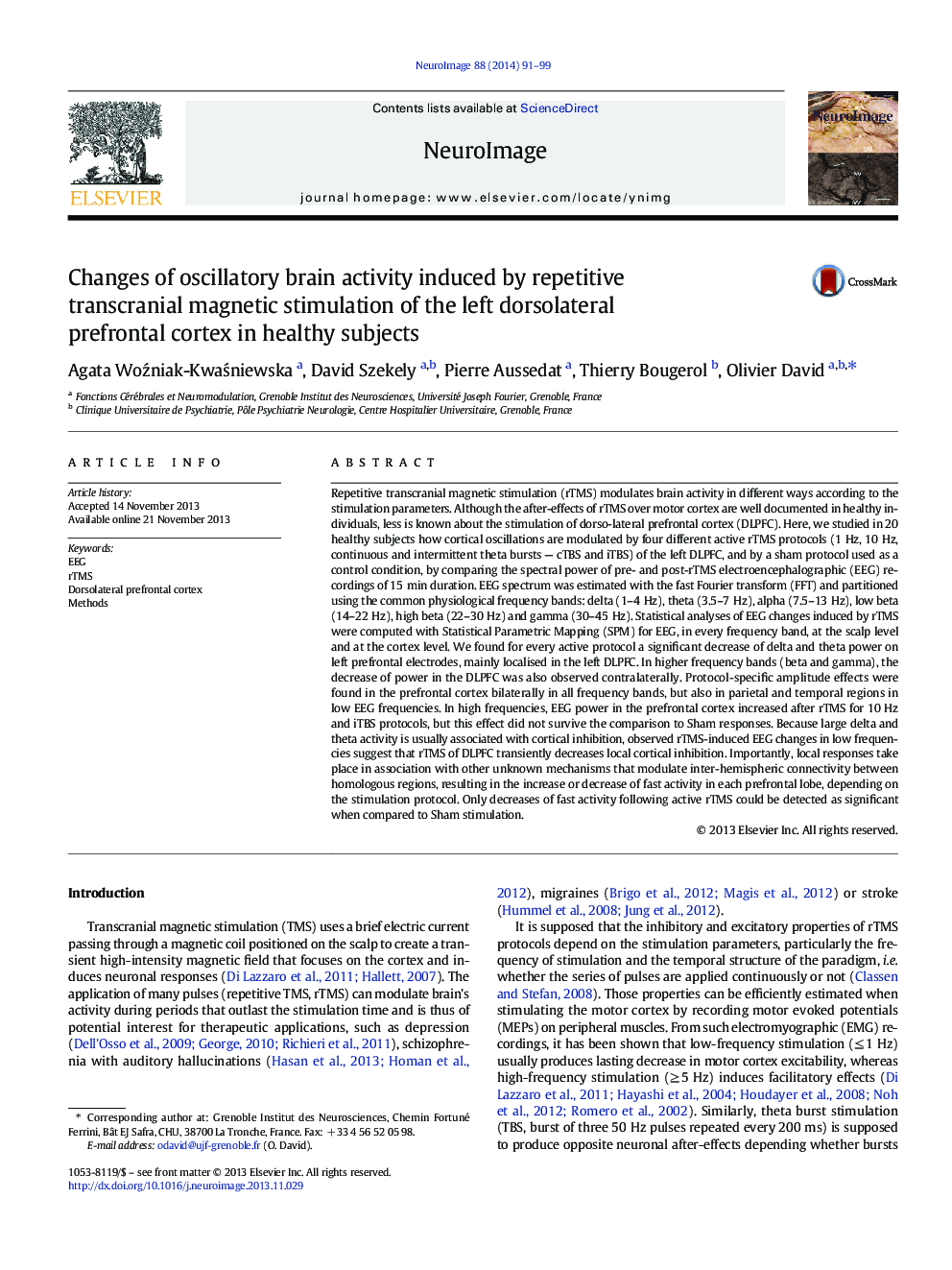| کد مقاله | کد نشریه | سال انتشار | مقاله انگلیسی | نسخه تمام متن |
|---|---|---|---|---|
| 6027673 | 1580917 | 2014 | 9 صفحه PDF | دانلود رایگان |
- First comparison of EEG after effects between 5 rTMS protocols of left DLPFC
- Decrease of EEG power in low frequencies found in the left DLPFC for all protocols
- Decrease of EEG power in high frequencies found in the left and right DLPFC
Repetitive transcranial magnetic stimulation (rTMS) modulates brain activity in different ways according to the stimulation parameters. Although the after-effects of rTMS over motor cortex are well documented in healthy individuals, less is known about the stimulation of dorso-lateral prefrontal cortex (DLPFC). Here, we studied in 20 healthy subjects how cortical oscillations are modulated by four different active rTMS protocols (1Â Hz, 10Â Hz, continuous and intermittent theta bursts - cTBS and iTBS) of the left DLPFC, and by a sham protocol used as a control condition, by comparing the spectral power of pre- and post-rTMS electroencephalographic (EEG) recordings of 15Â min duration. EEG spectrum was estimated with the fast Fourier transform (FFT) and partitioned using the common physiological frequency bands: delta (1-4Â Hz), theta (3.5-7Â Hz), alpha (7.5-13Â Hz), low beta (14-22Â Hz), high beta (22-30Â Hz) and gamma (30-45Â Hz). Statistical analyses of EEG changes induced by rTMS were computed with Statistical Parametric Mapping (SPM) for EEG, in every frequency band, at the scalp level and at the cortex level. We found for every active protocol a significant decrease of delta and theta power on left prefrontal electrodes, mainly localised in the left DLPFC. In higher frequency bands (beta and gamma), the decrease of power in the DLPFC was also observed contralaterally. Protocol-specific amplitude effects were found in the prefrontal cortex bilaterally in all frequency bands, but also in parietal and temporal regions in low EEG frequencies. In high frequencies, EEG power in the prefrontal cortex increased after rTMS for 10Â Hz and iTBS protocols, but this effect did not survive the comparison to Sham responses. Because large delta and theta activity is usually associated with cortical inhibition, observed rTMS-induced EEG changes in low frequencies suggest that rTMS of DLPFC transiently decreases local cortical inhibition. Importantly, local responses take place in association with other unknown mechanisms that modulate inter-hemispheric connectivity between homologous regions, resulting in the increase or decrease of fast activity in each prefrontal lobe, depending on the stimulation protocol. Only decreases of fast activity following active rTMS could be detected as significant when compared to Sham stimulation.
Journal: NeuroImage - Volume 88, March 2014, Pages 91-99
